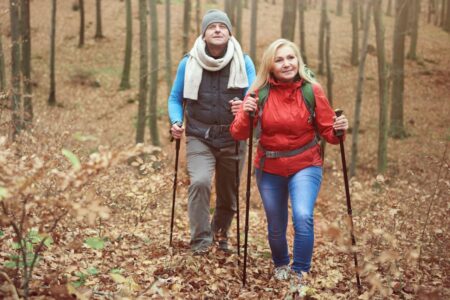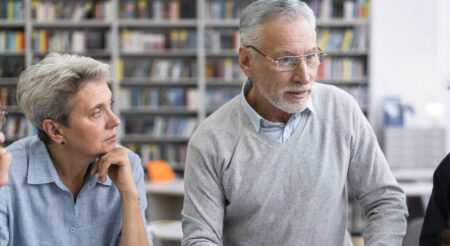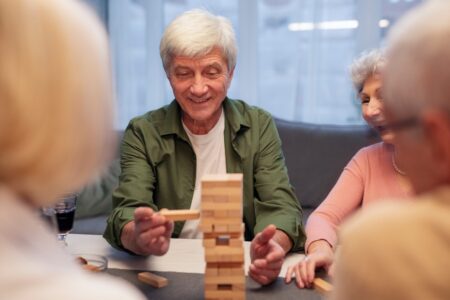Making your kitchen safe is very important, especially for older adults. As we get older, we’re more likely to get burns and cuts. Many accidents happen when individuals lose focus, particularly when loose clothing comes into contact with heat sources. Implementing kitchen safety tips for seniors avoiding burns and cuts can help seniors avoid injuries, making the use of kitchen appliances crucial for their safety. It is also important to understand the proper use of kitchen appliances, specifically highlighting ovens, and to follow manufacturer instructions to prevent accidents while cooking. There are many ways to make your kitchen safer. You can change how you do things, pick the right tools, and arrange your space well. Doing these things can help lower the risk of getting hurt while cooking or doing kitchen chores. Additionally, creating a comfortable home environment is essential to accommodate the unique needs of seniors as they age.
Key Takeaways
- Understanding common kitchen hazards is crucial for seniors.
- Proactively adjusting routines and habits can help prevent accidents.
- Utilizing ergonomic utensils and non-slip cutting boards enhances safety.
- Proper lighting and optimal kitchen layout reduce the risk of injury.
- Knowing emergency procedures and having a first aid kit on hand is essential.
Understanding Kitchen Hazards for Seniors
Keeping a kitchen safe is very important for seniors. As people get older, they face more dangers of getting hurt and encounter potential hazards in the kitchen . Effective ways to stop accidents in the kitchen are needed for them.
Common Kitchen Hazards
Many potential dangers in the kitchen can hurt seniors. Slippery floors, which can prevent slips not using appliances right, and mess can cause trouble. Falling can happen on wet floors, and old or wrongly used appliances might burn or shock. It is also important to keep small children out of the kitchen to avoid accidents and distractions while cooking.
Proper lighting in cooking areas is essential to enhance safety tips for seniors and functionality, especially for seniors.
Importance of Awareness
Knowing about these dangers is key to staying safe. Seniors should know the risks and change how they cook. Using mats that don’t slip and keeping things in easy reach can make kitchens safer. Additionally, it is crucial to regularly check safety equipment like fire extinguishers and smoke alarms to ensure they are functional and up to date.
Preparing the Kitchen for Safe Cooking
Making a kitchen safe for seniors begins with good setup. We can make the space safer and easier to use by organizing it right, including using pull out shelves . Follow these tips to make your kitchen safer for them.
Decluttering Workspaces
Keeping the kitchen clean is key for senior safety. Keep counters clear to lower the chance of spills and accidents. Have things they use a lot in easy spots to prevent unnecessary bending and reaching high, which can cause falls. Maintaining a safe environment by keeping the kitchen organized is essential for reducing risks and promoting independence. Additionally, seniors should wear short or tightly rolled sleeves to prevent loose clothing from catching fire.
Optimal Kitchen Layout
A well-planned kitchen layout is crucial for senior safety. Make sure there is enough room for walkers or wheelchairs to move easily. Put important cooking appliances, tools, and food where they can easily get to them, so they don’t have to move around too much.
Proper Lighting Solutions
Good lighting is important to help seniors see better and avoid accidents. Use bright, efficient lights and ensure adequate lighting all over the kitchen, especially by the counters and stove. Adding lights under cabinets and lights that turn on by motion can also help them see better and stay safe. Motion sensor lights improve visibility and safety by making it easier to navigate the kitchen during nighttime.
With thoughtful planning, you can make cooking safer and easier for the elderly. These safety steps help them be more independent, contributing to both safety and a safer kitchen to cook.
Essential Kitchen Tools for Seniors
Keeping elderly kitchens safe means having the right tools. It’s key to use utensils designed for comfort and less injury risk for seniors, and to avoid loose clothing while cooking .
Ergonomic Utensils
Seniors with less hand strength need ergonomic utensils. These easy grip utensils have big, cushioned handles for a good grip. OXO Good Grips offers many ergonomic kitchen tools that are easy and comfy to use. Additionally, using jar openers can make tasks easier and promote independence for seniors.
Non-Slip Cutting Boards
Having a stable workspace is crucial for senior safety. Non-slip cutting boards stay put and prevent accidents. They lower the chance of slips and injuries, making it safer for elders.
Easy-Grip Pot Holders
To avoid burns, seniors should use easy-grip pot holders. They’re made easy to hold, even with weak hands. They provide better protection and control when handling hot items.
Safe Cooking Practices
Making sure cooking safety for seniors is followed means sticking to certain steps and tips. By doing this, you can greatly cut down on the chances of getting burns, cuts, and facing other fire hazards in the kitchen.
Techniques to Avoid Burns
There are key steps to take to prevent burns while cooking. Always wear oven mitts or pot holders when handling hot pots and pans. Seniors’ skin is more sensitive to high temperatures, so proper kitchen lighting is essential to avoid accidents associated with hot pots and pans. It is crucial not to leave cooking unattended, especially when using high heat for methods like frying, grilling, or broiling. Wear tight rather than loose clothes to avoid catching fire, and keep pot handles turned in so they don’t get knocked over.

Keeping your cooking area tidy is key to avoiding burns. Always move anything that could cause you to accidentally get burned by hot tools.
Safe Knife Handling
Handling knives safely is a must for senior kitchen safety. Sharp knives are safer because dull ones can slip and need more force. Cut away from your body and use a steady, non-slip board for cutting.
| Safe Knife Handling Tips | Details |
| Choose the Right Knife | Go for high-quality, easy-to-hold knives that don’t need much force to grip. |
| Knife Maintenance | Always keep your knives sharp to lower the chance of slipping and getting hurt. |
| Proper Grip | Hold the knife firmly with your main hand, and keep what you’re cutting stable with the other. |
| Storage | Put knives in a block or on a magnetic strip, not loosely in a drawer. |
Managing Hot Surfaces
Dealing with hot surfaces carefully is key for cooking safety for seniors. Use heat-proof mats and trivets to keep counters safe. Tilt the lid away when opening hot pots to avoid steam burns and be cautious of hot water.
Let things like toasters and kettles cool down before touching them. Having gadgets that turn off by themselves can also help keep you safe from overheating and burns. Additionally, keep flammable items like dishcloths and paper towels away from the stove as they can easily catch fire.
Food Preparation Tips
Ensuring kitchen safety during food preparation is key for the elderly to stay healthy. By following safe food practices, seniors reduce the risk of foodborne illnesses and getting sick from food. This makes the kitchen a safer place for them.
Importance of Timely Food Storage
Storing perishable items right away is crucial for elderly kitchen safety. Foods that spoil must go straight to the fridge. Putting dates on them helps keep track of their freshness, while ensuring the kitchen floor is clean. Knowing how long to store different foods helps avoid waste and eating bad food.
Thawing Food Safely
To avoid food poisoning, it’s important to thaw food safely. Food should be thawed in the fridge, under cold water, or in the microwave. This keeps the food at a safe temperature while it thaws.
Using Food Safety Charts
Food safety charts are useful for keeping the kitchen safe for the elderly. They show the right cooking temperatures and how long to store food. A chart in the kitchen helps make sure food is cooked and stored properly, so it’s safe to eat.
| Category | Refrigerator (40°F or below) | Freezer (0°F or below) |
| Raw Poultry | 1-2 Days | 12 Months |
| Cooked Fish | 3-4 Days | 4-6 Months |
| Dairy Products | 1 Week (Milk) | 1-3 Months (Cheese) |
Managing Mobility in the Kitchen
Seniors who love to cook need a kitchen that’s safe and easy to use. Making a few key changes, including using non slip mats, can make a big difference. These changes help them stay independent and enjoy cooking without worry.
Choosing the Right Footwear
It’s very important for seniors to wear the right shoes in the kitchen. Shoes that don’t slip and have good support can prevent falls. This means they can cook safely and feel more secure on their feet.
Utilizing Kitchen Aids
Using helpful tools in the kitchen can keep older adults safe. Things like walkers, canes, and grab bars make moving around easier. This helps seniors cook their meals without fearing they might fall.
Easy-to-use kitchen tools are especially important for individuals with limited mobility, as they enhance safety and make daily tasks more manageable.

Adapting Work Surfaces
Changing the height of counters can help seniors a lot. Countertops that can move up or down or platforms that raise them make cooking easier. It also stops aches in joints and muscles, making the kitchen a better place to be.
Making sure everything they need is easy to reach helps too. This turns cooking into a fun activity, not a tough chore.
Fire Safety in the Kitchen
It’s very important to prevent kitchen fires and keep seniors safe. Taking steps ahead of time, like installing smoke alarms, makes cooking safer for them. Understanding the proper use of stoves and other appliances is crucial to prevent accidents. Here are key fire safety tips to keep in mind:
Installing Smoke Detectors
Smoke detectors play a big role in stopping kitchen fires. They should be placed in the kitchen and near where people sleep. You must check these detectors often to make sure they work right.
Having a Fire Extinguisher
Every kitchen needs an easy-to-reach fire extinguisher. It should be close to where you cook but not too close to the stove. Seniors need to know how to use it and what kinds of fires it can put out.
Creating an Escape Plan
Having a clear escape plan is key to staying safe in the kitchen for seniors. The plan should show the fastest, safest ways out of the house if there’s a fire. It’s important to practice this plan often.
Everyone should know exactly what to do if there’s an emergency. Try to have more than one way out if you can.
Managing Chemical Safety
Keeping kitchen safety tips measures for elderly top-notch helps prevent accidental poisonings. In elderly kitchen safety, handling chemicals safely is key.
Safe Storage of Cleaning Supplies
To boost elderly kitchen safety, store cleaners in their original containers with labels. Put them on high shelves or in locked cabinets, and encourage wearing tightly rolled sleeves while cooking . Make sure all containers are tightly closed to prevent spills.

Understanding Labels and Warnings
It’s crucial to understand chemical product labels and warnings. Look for words like “Danger,” “Warning,” and “Caution.” Learn about the risks these products may pose. Always use them safely, following the instructions to maintain kitchen safety measures for elderly.
Alternatives to Harsh Chemicals
Choose safer options to protect elderly kitchen safety. Use natural cleaners like vinegar, baking soda, and lemon juice. They’re effective and lessen exposure to harmful chemicals.
Enlisting Help When Needed
Cooking can be a lot of fun, especially with others. For seniors, help in the kitchen means more than just company; it’s key for staying safe. Here are some senior-friendly kitchen tips to figure out when and how to get that help.
Importance of Cooking with Others
Cooking with loved ones can make cooking safer for seniors. It’s good for many reasons, including making tasks like broiling food easier.
- It makes things less physically demanding.
- More people can spot dangers.
- It’s great for feeling connected and happy.
Additionally, enlisting the help of a family member can further ensure safety and support for seniors in the kitchen.
When to Hire a Helper
Knowing when to ask for professional help is important. If some tasks are too hard or unsafe, getting a helper is a good idea.
This help can include:
- Assistance with preparing meals.
- Help with carrying heavy or hot things.
- Someone to watch over and ensure kitchen safety for seniors.

Community Resources for Seniors
There are community services that offer senior-friendly kitchen tips and help stay safe:
- Senior centers might have meal programs or cooking classes.
- Groups and non-profits may have volunteers who can visit homes.
- Online groups are great for sharing tips and resources.
Using these resources is key to keeping a safe and fun kitchen. It helps make cooking enjoyable while reducing risks.
FAQ
What are some crucial kitchen safety tips for seniors to avoid burns and cuts?
Seniors should use bright lights and tools that are easy to hold. They should also ensure that the floor and cutting boards are slip-resistant, especially when handling sharp objects. When using hot pots, it’s important to be careful and wear protective gear. Creating a safe kitchen environment is crucial to avoid burns from boiling liquids and cuts, promoting independence and safety for seniors.
What are some common kitchen hazards for seniors?
Watch out for slippery floors, unsafe use of appliances, and too much clutter. Seniors need to know these risks and change how they cook. This makes their kitchen safer.
Why is awareness of kitchen hazards important for seniors?
Knowing about dangers helps seniors avoid them. This can lower the chance of getting hurt.
What barriers might hinder safe cooking for seniors?
Things like weaker hand strength and trouble moving can make cooking hard for seniors. It’s good for them to adjust their kitchens. Using the right tools can also help a lot.
How can seniors prepare their kitchen for safe cooking?
To cook safely, seniors should keep their kitchens tidy and well-organized. Good lighting is also key. This reduces the chance of accidents.
What lighting solutions are recommended for senior-friendly kitchens?
Use bright, energy-saving lights to help seniors see better. This is especially important for those with poor vision.
What essential kitchen tools should seniors use?
Choose tools that are easy to hold, cut with, and use without slipping. This helps with weaker hands and reduces accidents.
How can seniors avoid burns while cooking?
Be careful with hot pots, wear the right protection, and keep hot areas safe.
What are some safe knife handling practices for seniors?
Use sharp knives and cut away from your body. Make sure the surface you’re cutting on won’t move.
How can seniors manage food preparation safely?
Store food correctly and thaw safely. Following food safety tips can help prevent illness.
What footwear is recommended for seniors in the kitchen?
Wear shoes that won’t slip. They should support well to avoid falls.
What kitchen aids can help seniors with mobility issues?
Walkers and canes can make cooking safer. They help you move around without falling.






